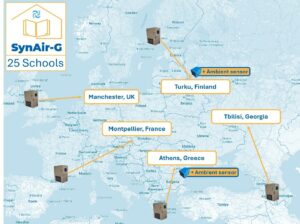
Since the start of the 2024–2025 school year, the SynAir-G project has been monitoring indoor air quality in 25 schools across Greece, the United Kingdom, France, Georgia, and Finland, aiming to track air pollutants that affect children’s health using advanced sensor technology.
How We Do It
In each of these five countries, five schools were equipped with SynAir-G sensor boxes—affordable, multi-pollutant monitoring devices that feature the advanced ENSENSIA sensor system, developed by the FORTH team. These sensors continuously track key air pollutants, including:
- Carbon Monoxide (CO)
- Nitric Oxide (NO)
- Nitrogen Dioxide (NO₂)
- Ozone (O₃)
- Fine Particulate Matter (PM2.5)
- Volatile Organic Compounds (VOCs)
The measurement of Carbon dioxide (CO2) is also critical as it helps assess the efficiency of ventilation in classrooms.


In addition to indoor air quality monitoring, ENSENSIA devices were installed outside two schools in Greece and Finland to monitor outdoor air quality, providing a comprehensive view of air pollution both inside and outside the classrooms. The goal is to differentiate between indoor pollutants and those coming from the outside environment. Three more ENSENSIA devices will be installed outside schools in France, the U.K., and Georgia during the upcoming school year.
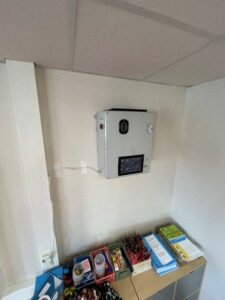
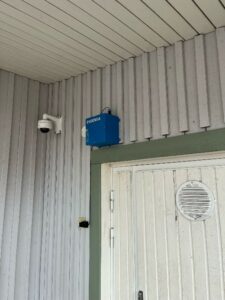
What Did We Discover?
The data collected revealed notable differences in air quality across schools and countries. Some key insights include:
- Finland consistently had the cleanest air in classrooms.
- Georgia recorded the highest levels of PM2.5, a fine particulate matter known to pose significant health risks.
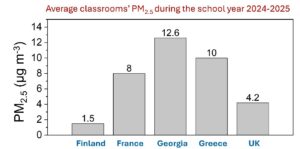
One interesting trend emerged in the levels of Volatile Organic Compounds (VOCs), which are primarily generated indoors. For instance, in a classroom in Greece during the winter of 2025, indoor VOC levels were much higher than outdoor levels, especially during school hours. Spikes in VOC levels were closely linked to everyday classroom activities such as student presence, cleaning, arts and crafts, and the use of markers or adhesives.
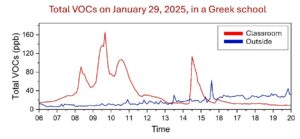
These data align with earlier studies in Athens, where researchers from FORTH found that indoor VOC levels were, on average, six times higher than outdoor levels. The primary sources of these indoor VOCs were furniture, building materials, and even the people in the classrooms.
Why It Matters
Air pollutants like PM2.5 and VOCs have serious implications for children’s health. These pollutants are linked to:
- Respiratory illnesses
- Cognitive impairment
- Long-term health risks
While fine particles like PM2.5 usually originate outdoors, VOCs are predominantly generated inside. This presents challenges for managing air quality in schools. For example, while opening windows may help lower VOC concentrations, it may also introduce harmful outdoor particles.
In SynAir-G project we are committed to transform scientific data into real-world action. By empowering schools with detailed, localized insights, we are working to create healthier learning environments for children across Europe.
Stay connected! Follow Synair-G on Twitter and LinkedIn, and subscribe to the SynAir-G Newsletter to receive latest updates.
